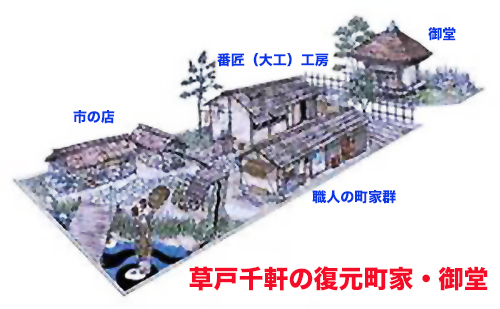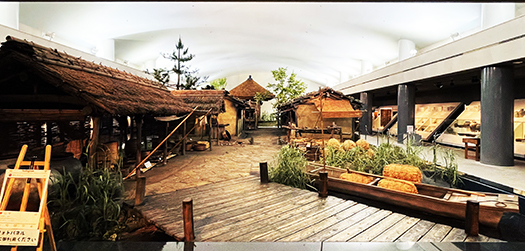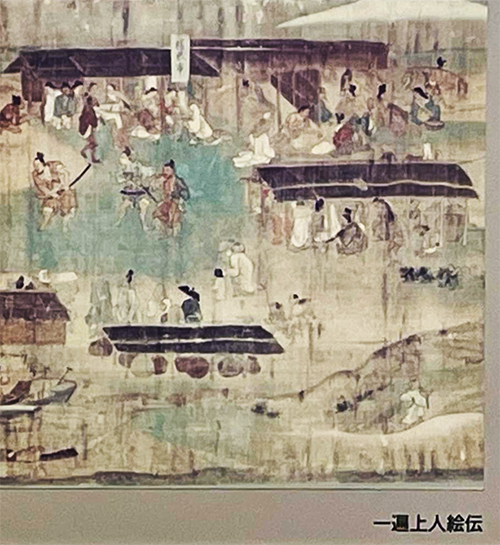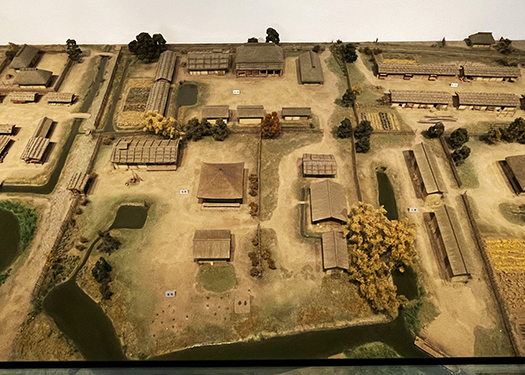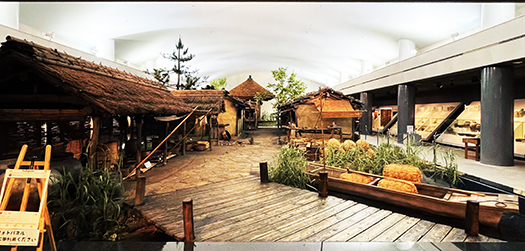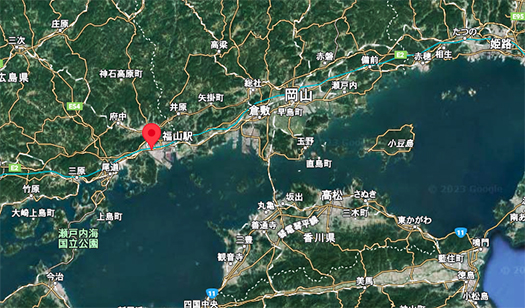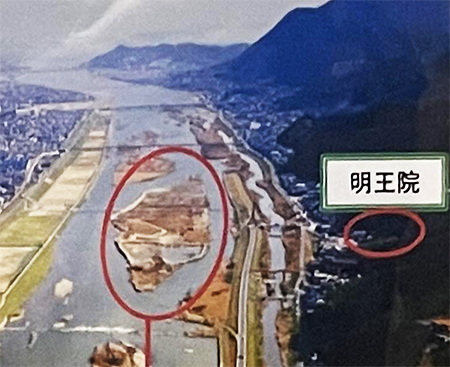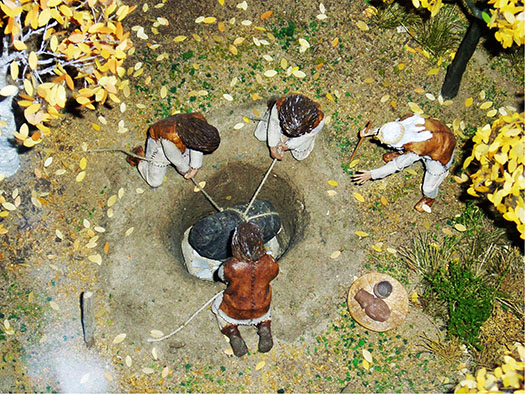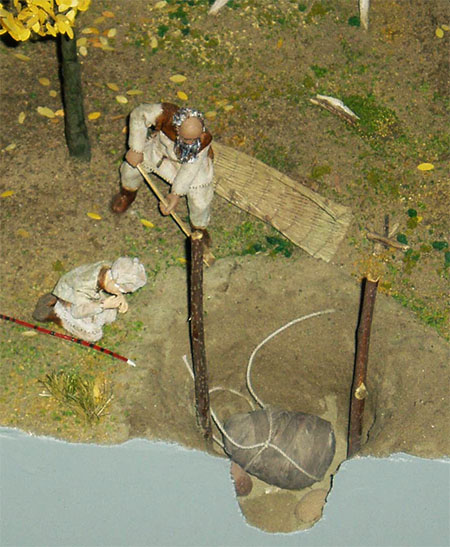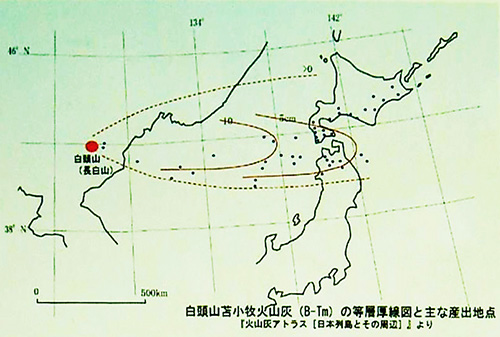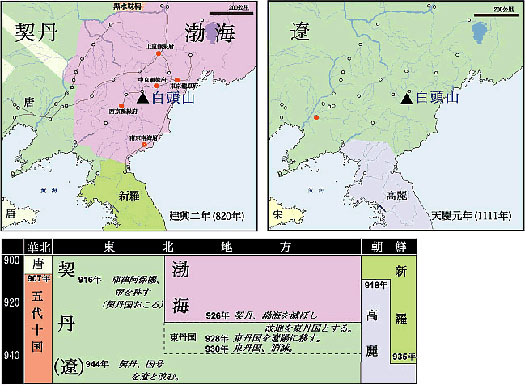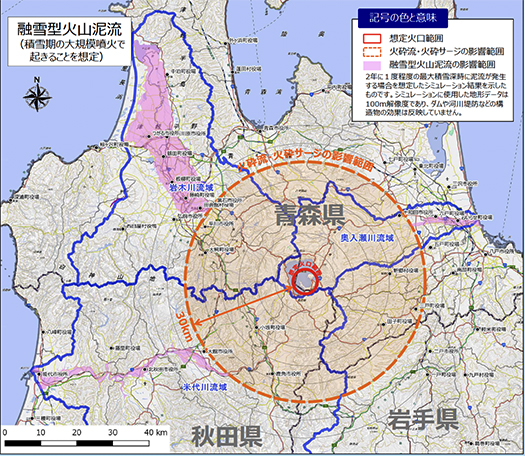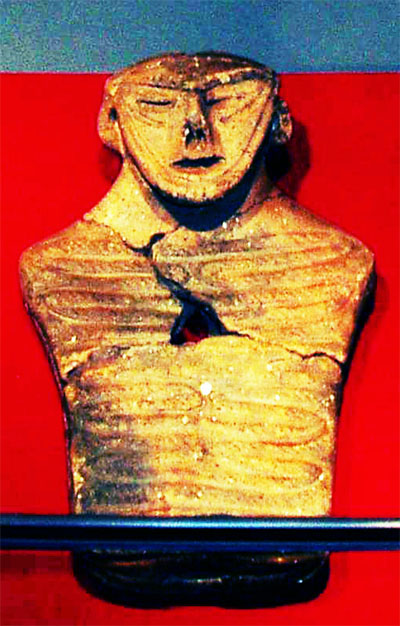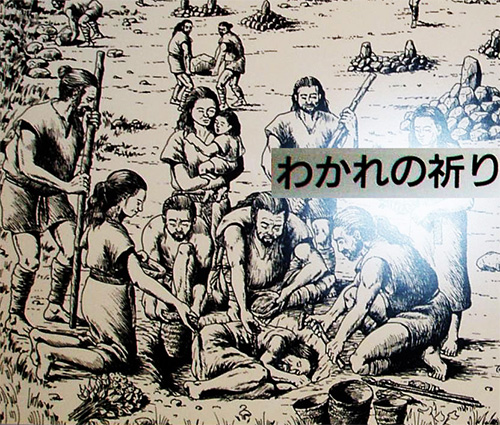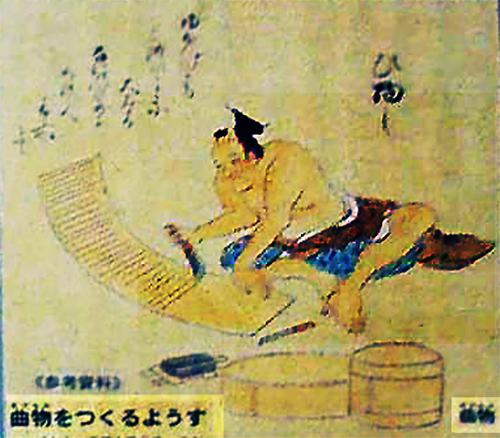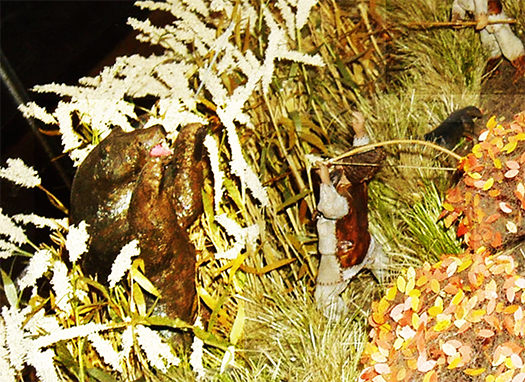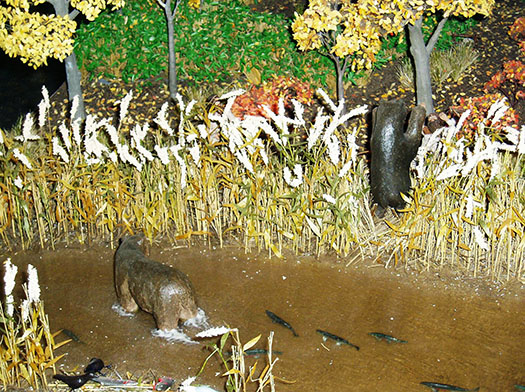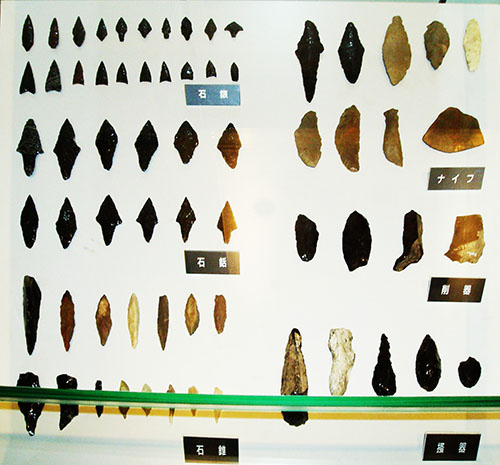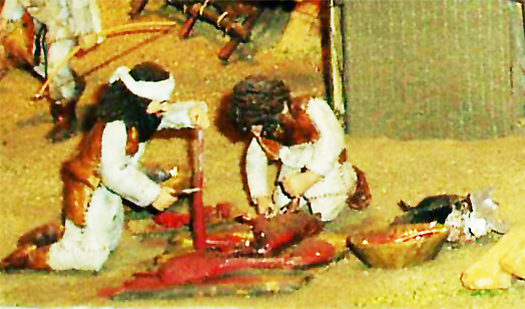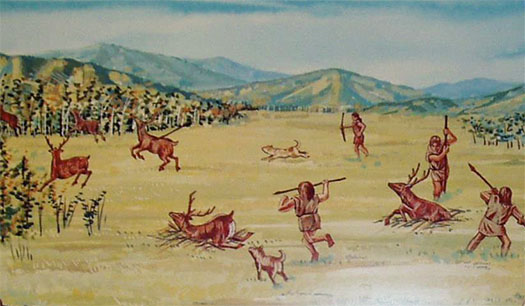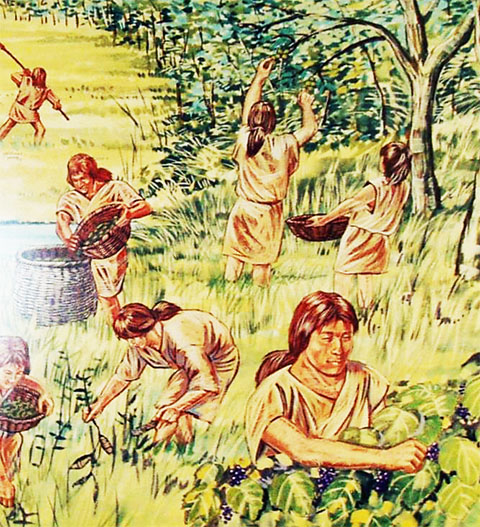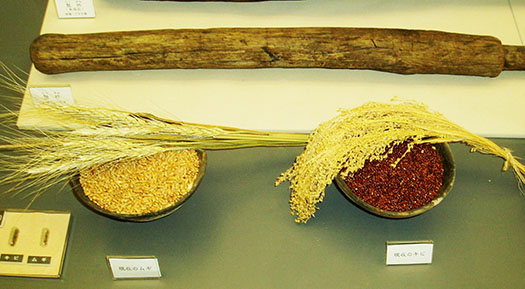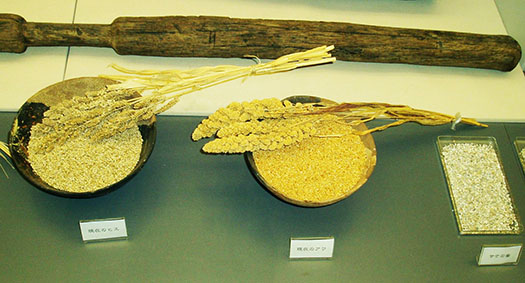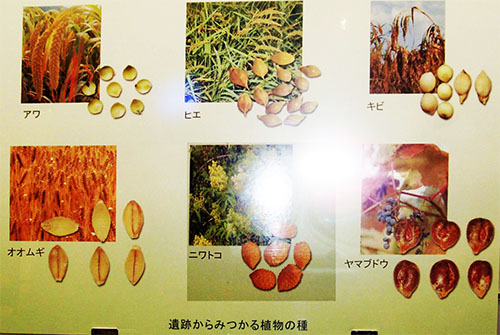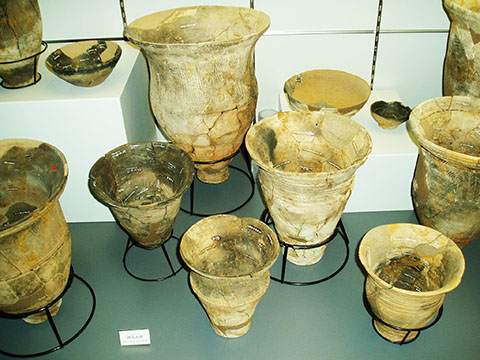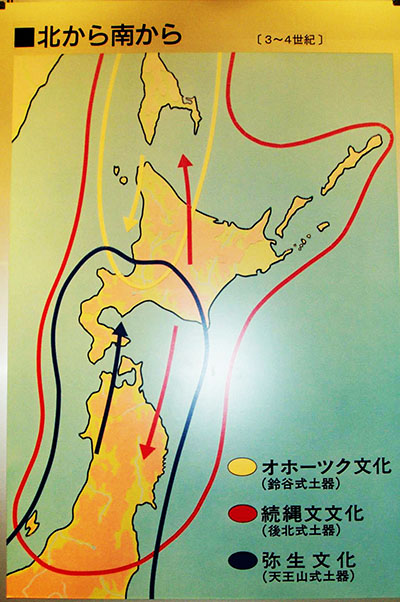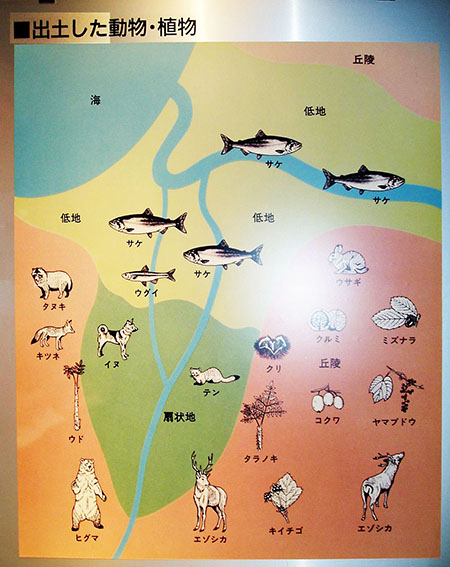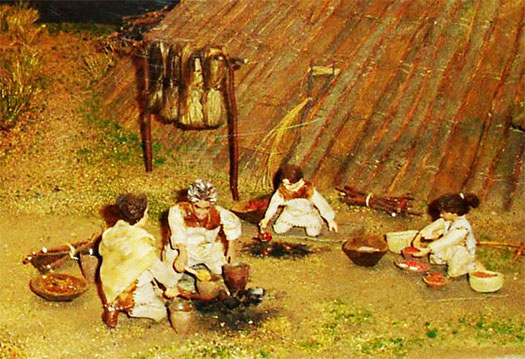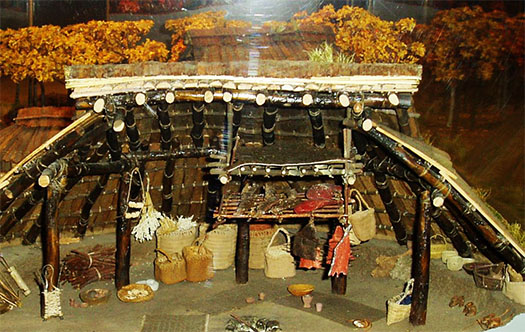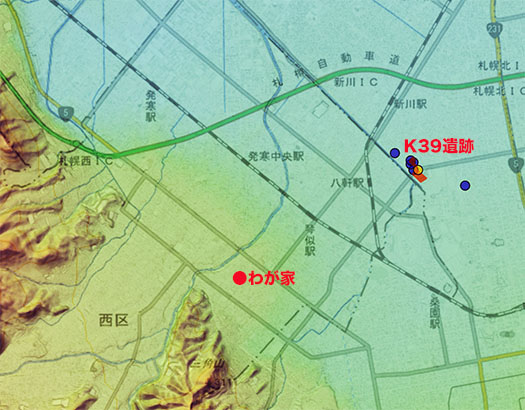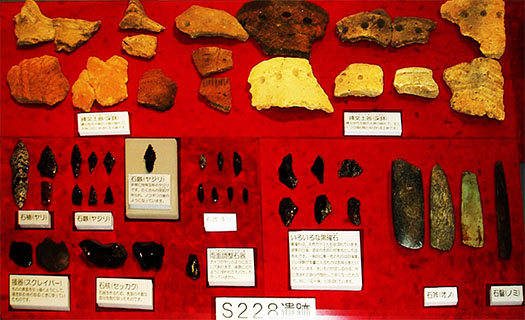

生活痕跡というとき、その主要な「息づかい」はやはり毎日の女性たちの実相、空気感。草戸千軒遺跡のジオラマ展示でもいちばん鷲づかみされるのは井戸周辺、その具体的な水仕事の痕跡。
毎日の洗濯に使われただろう「たらい」、それも漆塗りでしっかり防水加工されている曲げ物制作技術が、具体的な発掘成果に基づいて展示されている。
ご丁寧に物干しの様子まで復元され、下帯の類と思えるような衣類が掛けられている。いかにも「井戸端」で男性たちへの遠慮会釈ない話題で日頃のストレス解消している様子まで「こだま」してくる。
「ちょっとォ、ウチの亭主さぁエラそうなんだわ〜」
「亭主なんてみんな同じよ、ウチのなんてさぁ、こないだ・・・」
みたいな会話をこれ見よがしに長屋中に響き渡るように「こだま」させて憂さ晴らし(笑)。早口で、なおかぶせ合って会話するので、男たちには断片的にしか聞き取れないまま町に「こだま」していく。
図版は「臼と杵」と題された中世女性たちの暮らしのワンシーン。食材を粉にしてそれを調理する日常食材加工の様子でしょうが、杵で亭主への恨み辛みを込めて「すりつぶす」のに、お互いにはやし立てながら作業しているように思える。どうも自虐史観だろうか(笑)。


瀬戸内海交通の重要な結節点に位置していた「千軒」と呼ばれる集落都市のこういった「町家」環境の中で中世の人びとの「生活常識」は揺籃されていたに違いない。活発な物流・人流からはさまざまな暮らしの進化過程も情報流通していっただろう。商人たちにとってこういう市井の評価は得がたい「市場の声」として脳裏にこだましていった。
かれらが商売上の判断を下していくとき、こうした市井の声こそが最大の規範になっていただろうことは疑えない。国内・海外交易ネットワークの主要幹線往路である瀬戸内海地域の商業都市という存在は、民のナマの感覚が日々更新されている最先端地域だったのだろう。
情報という現代世界の先端的領域にも似たニオイをこうした町家空間は担っていた。
こうした地域からやがて瀬戸内海交通の最大都市・堺に情報選別感が到達して、民の声として商人たちの価値感に昇華していったことだろう。亭主たちへの呵責ない品評はそれでも愛がベースであっただろうが、それ以外のモノやコト、人物への呵責ない判断力は遠慮ないレベルに磨き上げられていった。
日本人の精神史に刻印される「西国」的価値感世界とは、こうした商業集落という存在が日々育成していった、ものの見方・道理であったのだと思えてきている。
English version⬇
Medieval Life and Women’s Stories: Kusado-Senken 2023 Revisited-3
Hey, my husband, he’s so rude! The world of cutting-edge information spreading with the most painful words in the ear (laughter). The voice of the people rises from there. The people’s voice rises up from there.
When we speak of traces of daily life, the main “breath” is the reality and atmosphere of women’s daily lives. In the diorama exhibition at the Kusado-Senken site, the most striking feature is the well area and the concrete traces of water work.
The exhibit shows a “tub” that would have been used for daily washing, and the technique used to make the waterproof, lacquered, and bent items is based on concrete excavation results. Even the clothes-drying area has been carefully reconstructed, and clothes that might have been used as undergarments are hung on the clothesline. The scene of the men relieving their daily stress by talking without reserve to the men at the “well” is echoed in the room.
Hey, my husband, he’s so rude!
My husband is the same as everyone else’s. The other day…”
They would “echo” these conversations throughout the tenement house, as if to show off their sorrows (laughter). (Laughs.) Because they speak so quickly and talk over each other, the men can only hear fragments of the conversation, but it echoes through the town.
The illustration titled “Mortar and Pestle” is a scene from the lives of medieval women. It is probably a scene of daily food processing, in which foodstuffs are processed into powder and cooked, and the women seem to be working with a pestle to “grind” their resentment toward their husbands, while shouting at each other. Thanks, I wonder if it is a self-flagellation (laughs).
The “common sense of life” of the medieval people must have been cradled in the environment of these “machiya” townhouses in the village town of Senken, located at an important node of the Seto Inland Sea transportation system. The active logistics and human flow must have provided information on the evolutionary process of various lifestyles. For the merchants, these evaluations from the marketplace were the “voice of the market” that they could not get enough of.
There is no doubt that the voices of the market would have been the most important norm for them when they made business decisions. The existence of a commercial city in the Seto Inland Sea region, a major artery in the domestic and international trade network, must have been a cutting-edge area where the people’s real senses were being renewed on a daily basis.
Machiya spaces like this one carried an odor similar to that of information, a cutting-edge area in the modern world.
From these areas, this sense of selective information must have eventually reached Sakai, the largest city on the Seto Inland Sea transportation route, and sublimated into the merchants’ sense of value as the voice of the people. While the remorseless evaluation of husbands may have been based on love, the ability to judge other things and people without reservation was refined to an unreserved level.
I am beginning to think that the “western” world of values that is imprinted in the history of the Japanese psyche is the way of thinking and reasoning that was nurtured day by day in the existence of these commercial villages.
Posted on 12月 15th, 2023 by 三木 奎吾
Filed under: 住宅マーケティング, 日本社会・文化研究 | No Comments »


